Intehill 17.3” Portable 4K Monitor
Intehill isn’t a brand that many will immediately identify. Based in Huizhou, China. The company builds displays using parts provided by Hanshi, another Chinese hardware supplier.
Hanshi does all the product research, manufacturing and marketing, while Intehill is classified as the ‘HDMI adopter’ according to the company information.
The business prides itself on producing displays that all have FCC, CE and PSE certification when they come to market, and there is clearly momentum to expand into Western markets.
Products with this branding are appearing on Shopify, Amazon and Alibaba.com, and today we’re going to review a high-end design made for those that need 4K resolutions on the move, the Intehill 17.3” Portable 4K Monitor.
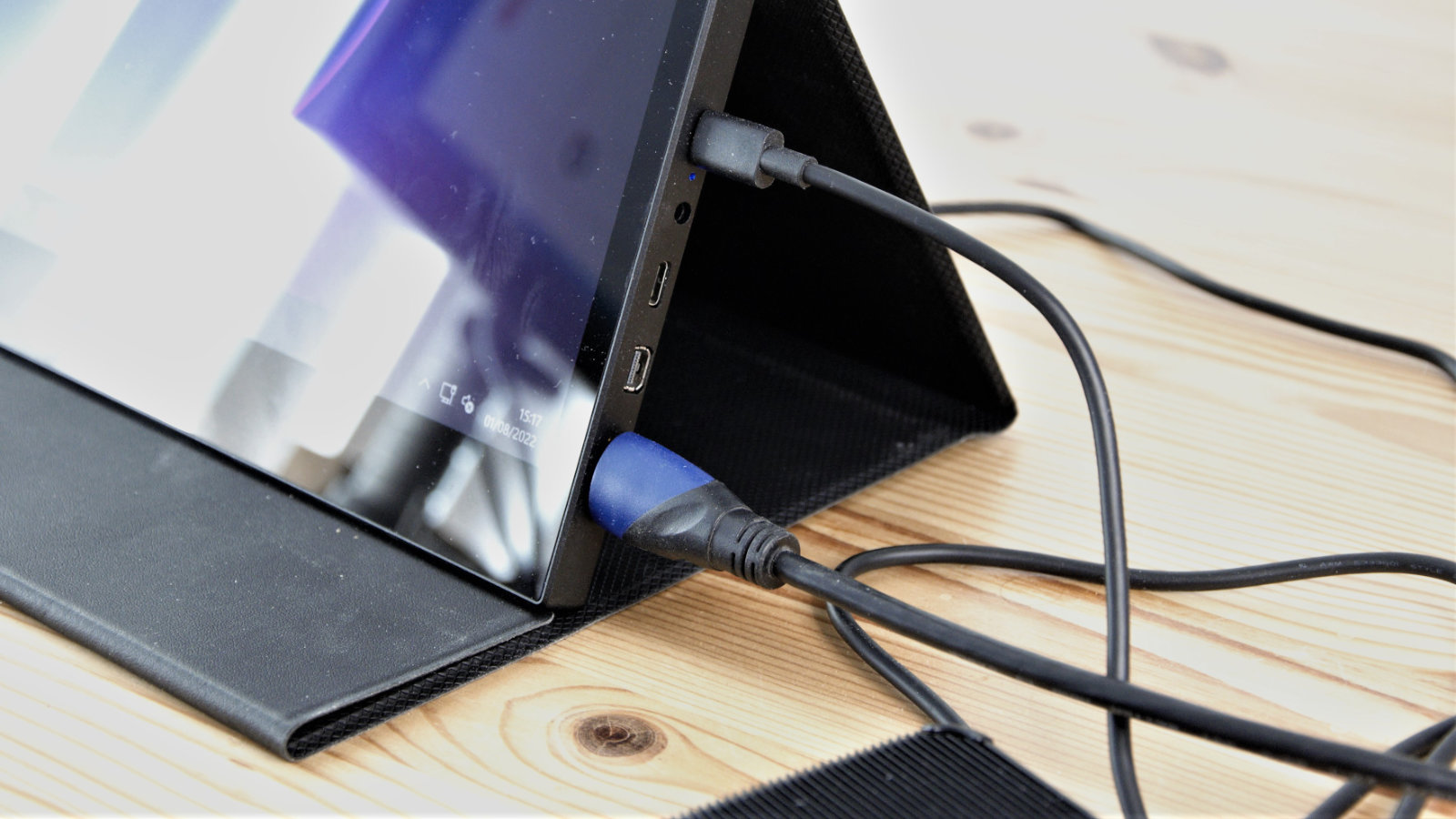
According to the Intehill website, this monitor is stocked in China and the USA, and the quoted price is $569.
Part of the issue here is that Intehill don’t seem keen on giving their monitor code numbers, and they make a range of monitors that are identified mainly by their resolution.
Included are other 17.3-inch 4K HDR monitors that offer different input options, so be careful when ordering one that your purchase has the inputs you need.
Intehill 17.3” Portable 4K Monitor: Design and features
- Great build quality
- Lots of inputs
- No PSU included
Removing the Intehill 4K portable monitor from its box for the first time, this device has some unexpected weight and substance.
Weighing in at 1.2KG, not including the cover, it is a satisfying combination of milled aluminium and glass.
This display comes wrapped in the ‘Smart Case’ as Intehill describes the cover, a flexible wrap that doubles as a support stand using magnets to attach it. The screen has tiny feet projecting from one side, most of the inputs on the right and the buttons for controlling the OSD menu on the left.
The only exception to the right-side inputs is a single Micro-B type OTG input on the left, with the more conventional video input technologies on the right.
These include a full-scale HDMI port, a Mini-DP and USB-C, along with a 3.5mm headphone jack. To be precise, there are two USB-C ports, but one is for powering the screen, and the other is for those with USB-C ports or Thunderbolt 3 with the ability to use them for display purposes.
It is possible to drive the panel completely with Thunderbolt, delivering both power and signal if the laptop has that port and can provide the wattage that the monitor needs to function.
Together with the screen and case are a selection of useful cables that comprise two USB-C to USB-C types and a mini-HDMI to full HDMI. There isn’t a DisplayPort cable, but that’s not the most surprising omission.
What you don’t get, somewhat incredibly at this price point, is a power supply.
Oddly, the box has some slots that suggest at some point in the gestation of this product, it was going to include a Type-C PSU, but Intehill chose to leave it out.
The issue here is that this screen won’t work with the typical Type-C charger PSU that comes with most phones. It needs something more substantial that can deliver between 30-45W, like those designed for laptops.
If you have a laptop with that type of PSU, then you’ll be fine, but this reviewer didn’t and was forced to part with around £30/$30 for a suitable one to make the Intehill screen work.
Once the screen has the right PSU inserted in the correct one of the two USB-C ports, it comes to life and works much like any other conventional monitor.
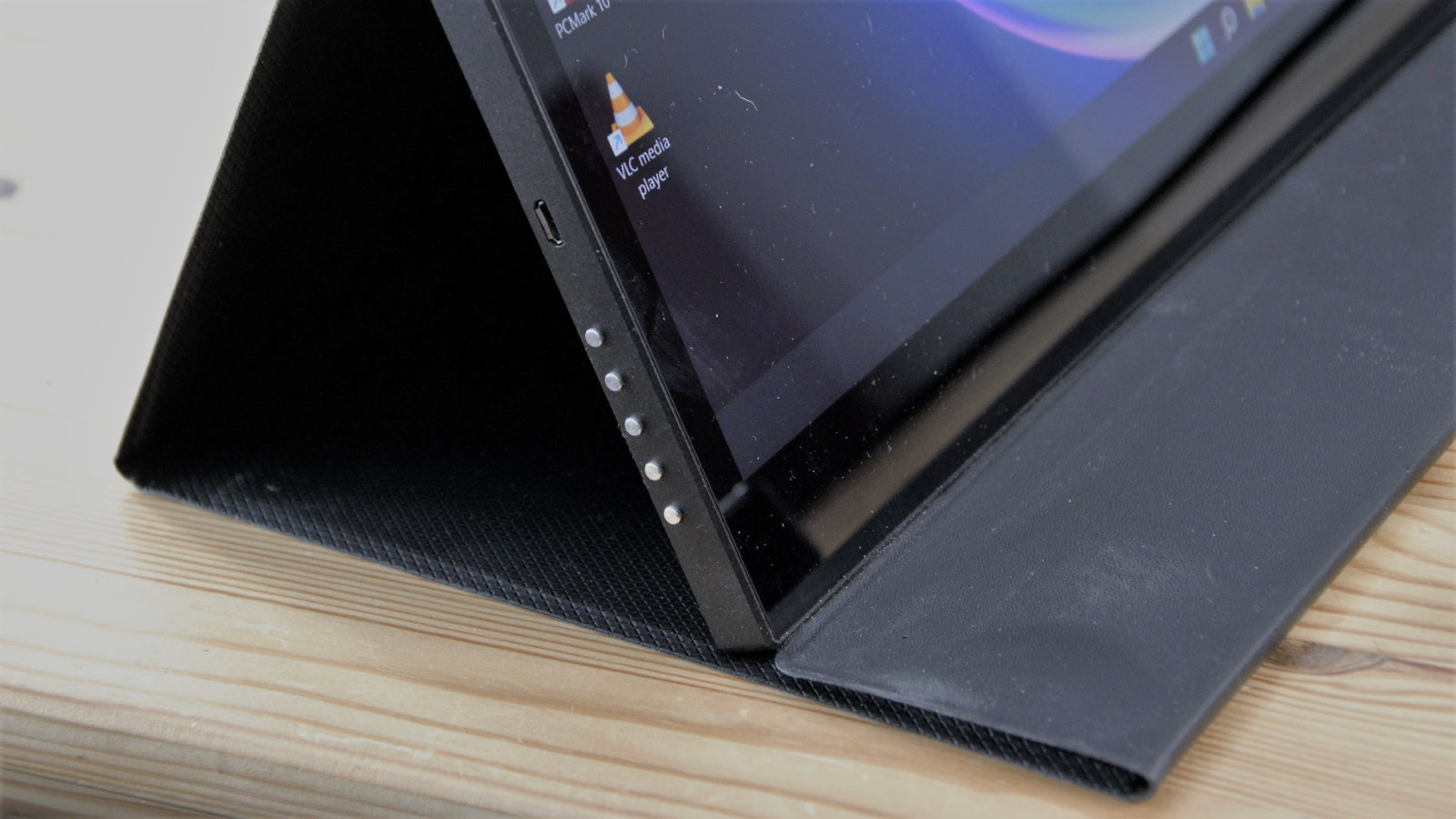
Panel size: 17.3-inch
Panel type: IPS
Resolution: 3,440 x 1,440
Brightness: 400cd/m2
Contrast: 1,000:1
Pixel response: 4ms
Color coverage: 100% Adobe RGB, 93% DCI-P3
Refresh rate: 60Hz
Vesa: 100mm x 100mm
Inputs: USB-C Power (25-45W), DisplayPort 1.4 Mini, HDMI 2.0, USB-C and Micro USB OTG
Weight: 1200g
What’s less wonderful is if you use a lower-powered PSU, it appears to wake, then puts a message on the screen about Power Saving and turns itself off.
This will confuse some buyers, just like it did this reviewer.
If the laptop you use supports PD mode over USB-C, the monitor can be driven with a single USB-C cable. But doing that assumes that the battery in the laptop can handle that level of demand or is connected to mains power.
For those that want a more robust stand than the Smart Case, the rear of the display has VESA holes for mounting it to proper support. Doing this will detract from the portability of this solution, but it's a valuable addition.
A helpful option might have been a kickstand like that on some other Intehill designs. The smart case is strong enough to hold the screen up, but it negates the possibility of mounting a small system onto the back using the VESA mounting holes and creating an ad hoc mobile PC.
Where it could also do with some work is in respect of the OSD Menu, which has relatively few options on it.
One of these options is HDR, which can be on or off. The screen technology here is IPS with a maximum brightness well below any HDR standards, and it lacks zoned backlighting. Therefore, HDR on this screen isn’t like it can be on an OLED or Quantum Dot TV.
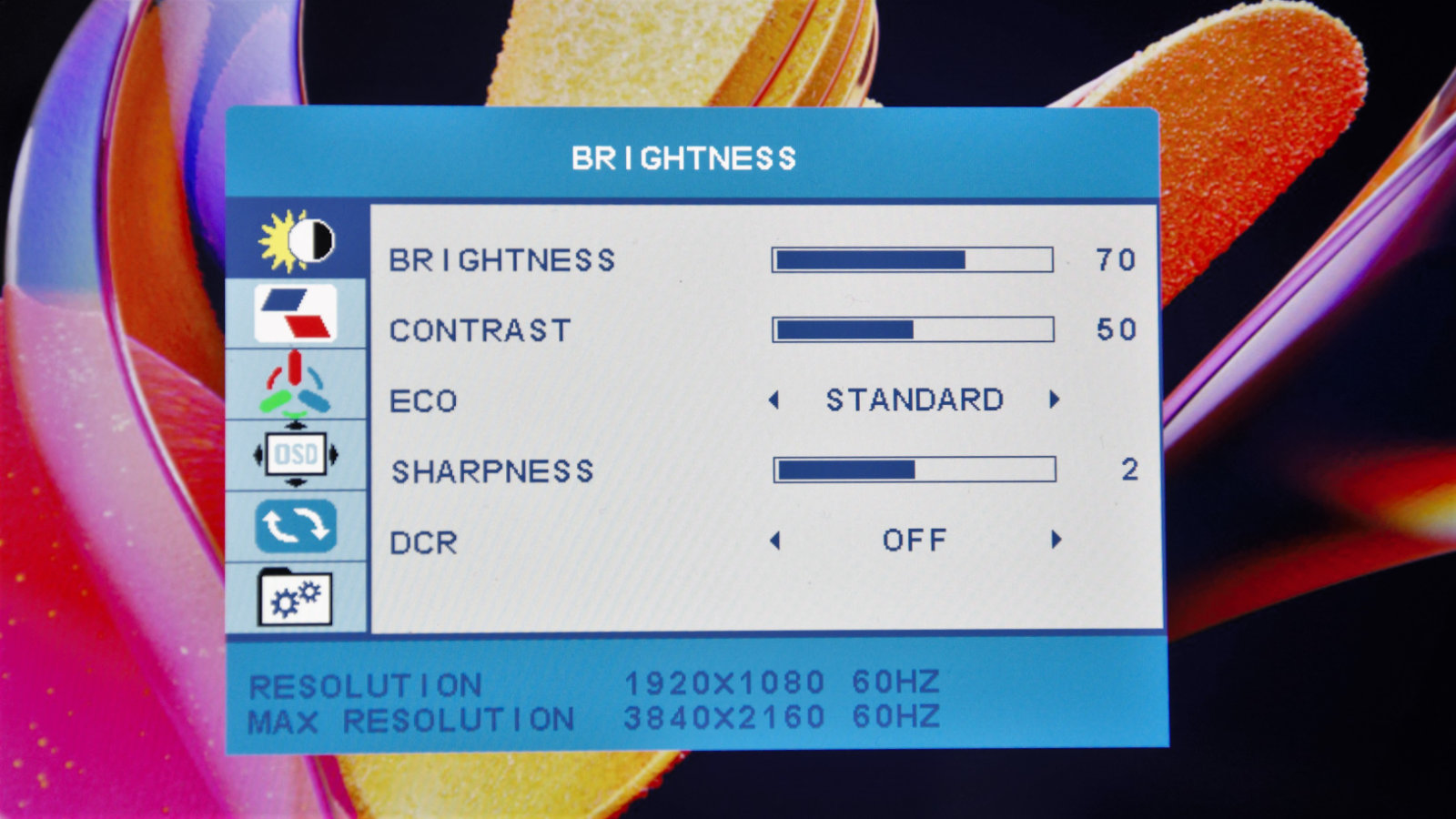
Intehill 17.3” Portable 4K Monitor: Performance
- Good factory calibration
- Above average colour balance and accuracy
- Not a true HDR panel
Once over the hurdle of finding a power supply with enough angry pixies to get this monitor to display, using it is simplicity itself.
HDMI and DisplayPort are mostly self-explanatory, and the only complexity comes from those using a display over USB. How well this works on a specific phone, tablet, Chromebook, or laptop is primarily down to how the output hardware was implemented in that hardware.
Being such a small panel and using IPS technology, I didn’t expect much coverage from the colour gamut from this 8-bit panel.
But, the panel here is considerably better than anticipated, with a good factory calibration squeezing as much contrast out of it as possible.
In testing, it didn’t quite hit its quoted 400nits, but it got close, and the contrast is almost precisely on the 1,000:1 ratio.
By default, the gamma is set to 2.2, and the curve accurately tracks that profile.
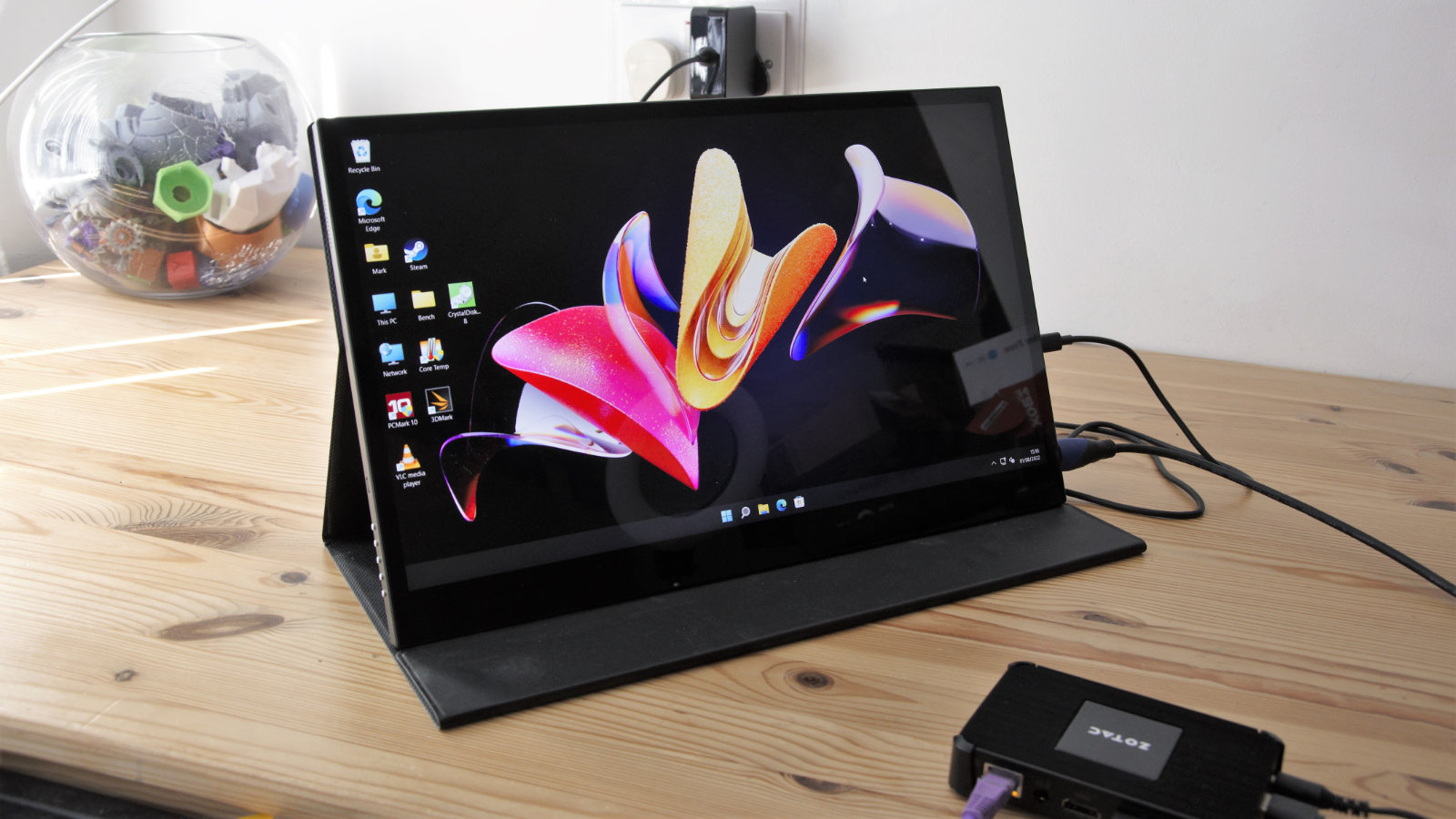
The only real weakness of this design is that the backlight is heavily centre-biased, and given how thin the panel is and not having a zonal backlight model is somewhat predictable.
The difference between the corners and the centre is around 4%, which is surprisingly low for these limitations.
Colour representation is generally good, but the suitability of those standards will depend on precisely what level of gamut coverage you expect.
For designers, 100% of Adobe RGB might work, though anyone working with colour grading video might want better than the 93% of DCI-P3 on offer here. There might be a little more to edge out of the colour profile with calibration, but it doesn’t quite hit the 97% or more of P3 that some panels are delivering these days.
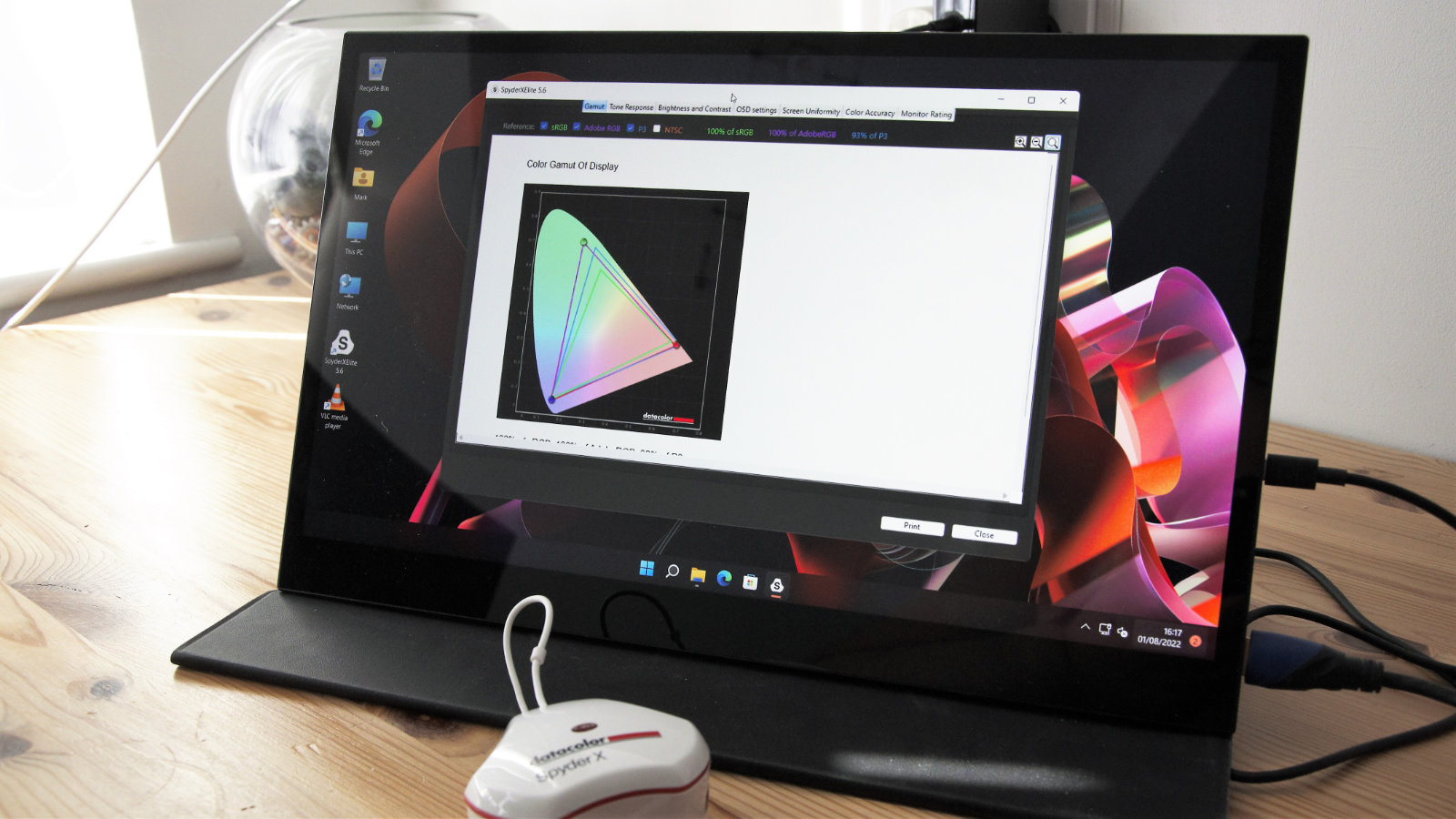
The HDR mode isn’t wonderful, mainly because the brightness and contrast levels aren’t near what they need to be to deliver true HDR. Oddly, in Windows 11, turning HDR on makes this screen look much worse than it does with it turned off, so avoid that.
Overall, the display was better than expected but how useful it might be to those who use colour professionally is debatable. The screen surface is very glossy, making reflections an issue, and for gamers, the maximum refresh of 60Hz won’t impress.
In use, this display can also be fussy about the quality of cables that connect to it. Intehill recommends only using HDMI 2.0 specification cables for that input, though they don't include one with the screen.
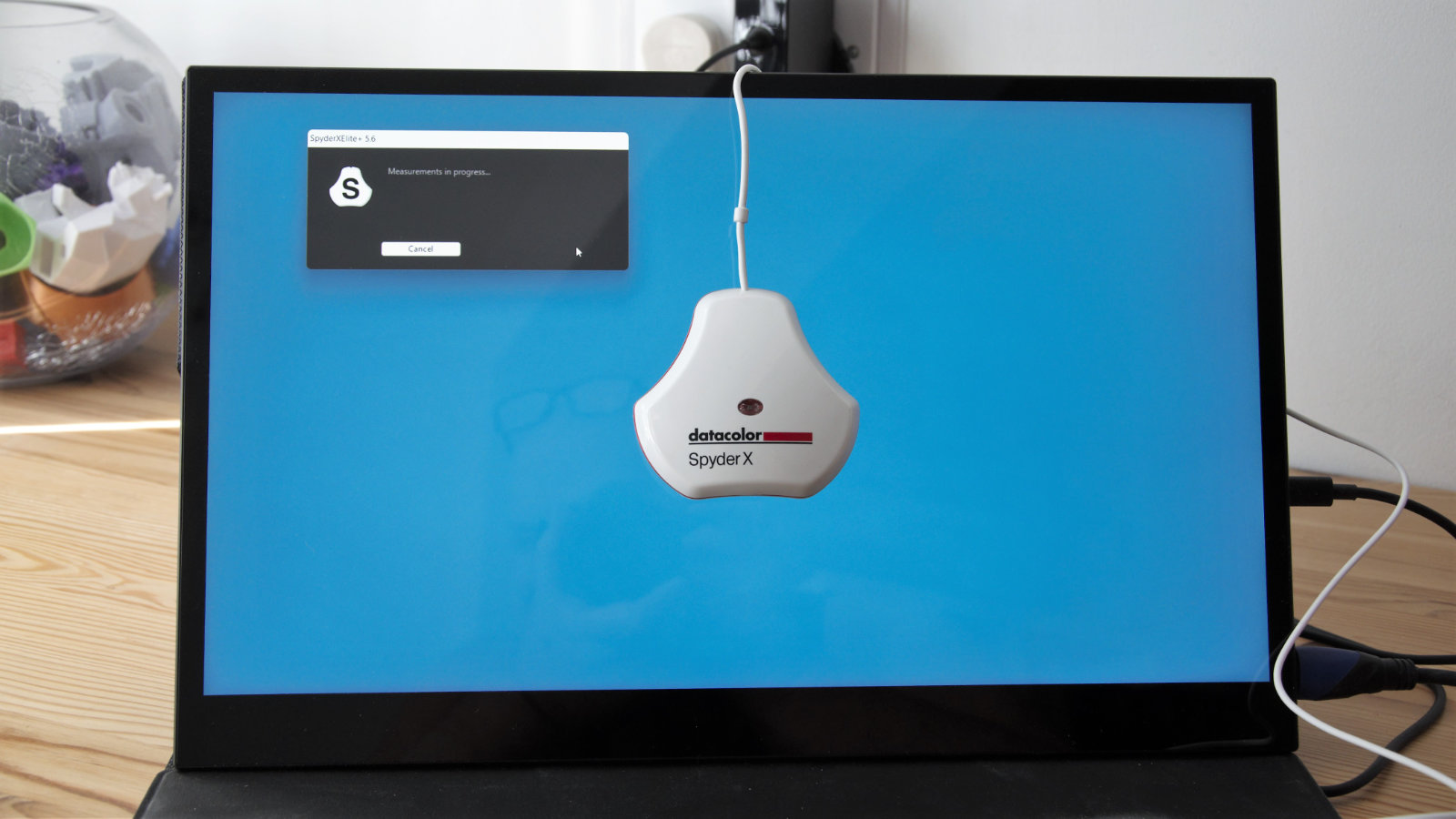
Intehill 17.3” Portable 4K Monitor: Verdict
Except for requiring a PSU to be bought or already owned, this monitor is a classy piece of technology that provides a genuinely portable 4K display solution.
At this point, it is essential to mention that it is generally accepted that the best viewing distance for a 4K display is 1.5 times the height of the screen.
As the viewable height of this monitor is about 21cm, that would make the optimal viewing distance as being just 30cm, give or take. If that seems close to you, then you’ll need a larger monitor than this.
In many respects, this product might have been more practical and potentially cheaper with a 1440p resolution panel, and Intehill might have that planned.
Given the relatively high cost involved, it’s worth taking a moment to look at potential use cases for this screen.
As this is an 8-bit IPS panel and not 10-bit, photographers and cinematographers might well not embrace it. Equally, it’s too expensive for those that like to game on vacation.
Where it might work is for those that wish to present a sales pitch, allowing them to keep their laptop screen pointed at them while delivering the pitch using this panel.
Drone pilots with HDMI out might love this, especially for reviewing captured footage, though it would need a power pack capable of generating the wattage needed to run and some means to avoid screen reflections.
The obvious question here is, do these applications make 4K a necessity? As Intehill makes an almost identically sized 1080p resolution screen for nearly half the price.
For some, like the drone cinematographers, it might be.
Like so many hardware choices, if this screen works for your specific application, it comes down to price. Frankly, there are so few options with this size, resolution, range of inputs and portability that it's mostly a matter of paying it or rethinking your plans.
Other brands have badged a similar product but want even more money for their version. Therefore, this might not be the best possible portable 4K display around, but it is available, even if you need to budget for a PSU alongside the asking price.
0 comments:
Post a Comment